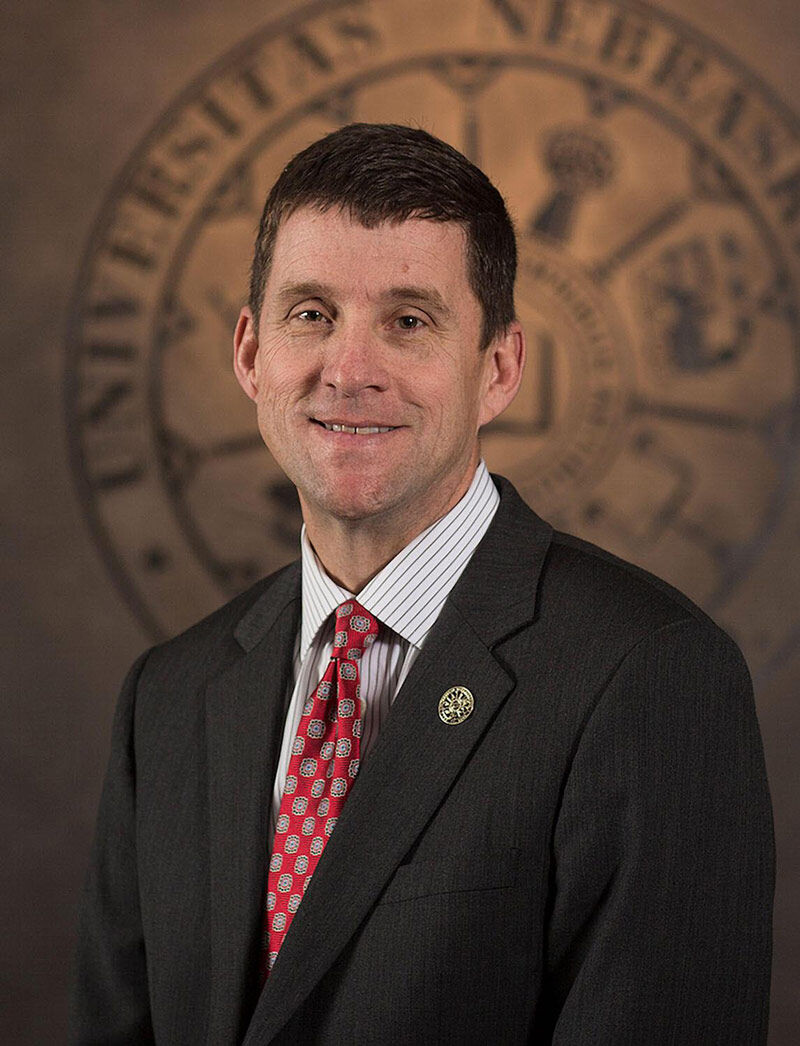
The University of Nebraska system has announced changes in structure, policy and process that will help manage a $49 million budget shortfall.

“The university is in a time of great momentum, yet our state’s fiscal challenges cannot be ignored,” said Chancellor Ronnie Green. “We are taking a proactive, inclusive approach to furthering our progress while we manage reduced funding and higher costs. We will have to approach things differently, but I’m confident in our ability to adapt and continue our upward trajectory.”
The changes announced Aug. 2, which are necessitated by cuts in state funding combined with rising costs, will focus on integrating facilities, energy, procurement and human resources functions at each institution into system-wide functions. Information technology services will also continue to integrate ITS across the system, a process that began more than a year ago and is designed to create less costly and more unified service.

“These changes are the result of diligent, thoughtful work by colleagues who have chosen to view this challenge also as an opportunity — to find creative ways to do more with less so we can continue to serve the state effectively,” said Hank Bounds, president of the University of Nebraska system. “We have difficult work ahead, but we’re focused on the future and what kind of university we want to be.”
Policy changes include a reduced mileage reimbursement rate for employees, a new software system for submitting travel expense reports that will save staff time and paper usage, and plans to significantly reduce printing and copying costs over time.
Overall, the budget-reduction efforts are expected to yield $30 million in long-term savings, including the loss of at least 100 positions, through attrition where possible, reductions where not.
Together, the long-term savings in facilities/energy ($7 million), procurement ($6.8 million), human resources ($4 million) and information technology ($6 million) will make up about 80 percent of the $30 million total. Savings will come from efficiencies from sharing more services and resources across the institutions, reductions in operational costs and position reductions.
“We are taking a proactive, inclusive approach to furthering our progress while we manage reduced funding and higher costs. We will have to approach things differently, but I’m confident in our ability to adapt and continue our upward trajectory.”
- Chancellor Ronnie Green
The changes were recommended by Budget Response Teams, which are composed of subject-matter experts from across and outside the system. More cuts will be announced in the coming months as recommendations by the teams undergo additional vetting.
The remainder of the reductions to operational costs will come from reductions and efficiencies in other areas including printing and copying, travel, financial operations, and public relations and marketing.
“We are grateful for the work of colleagues from each university within the system,” Green said. “This fresh perspective on how we operate in the non-academic areas is extremely important as we build greater effectiveness. I have also asked our academic leaders to consider how we can further our progress amid reduced state funding, and as we embark on our next academic year, we will follow our inclusive process for budget reallocations in these areas.”
The scale by which the system must permanently reduce its spending means it must re-think the way it does business to best protect its highest priorities of student affordability and academic quality, Bounds said. He noted both of those principles will be violated in closing its budget gap — and that additional cuts in state funding would have an even more significant impact on tuition and academic programs.
The work of the Budget Response Teams was made more challenging by trends in state funding that have required the system to become leaner over time. For example, it has the same number of employees funded by tax and tuition dollars today as it did in 2000, though enrollment and research have grown significantly during that time.
Budget response team recommendations were submitted to a system-wide steering committee, chaired by Executive Vice President and Provost Susan Fritz and Chief Strategist James Linder. The committee submitted final recommendations to the chancellors and president for approval.
Implementation of the teams’ work is being led by Marjorie Kostelnik, former dean of the University of Nebraska-Lincoln’s College of Education and Human Sciences.
Teams in campus safety and parking have convened to explore opportunities to integrate and save dollars, while teams in research services and institutional research are examining best practices for ways to conduct research more easily across the campuses. A digital education team continues to build a strategy for greater revenue growth for online programs.
Bounds said the system has an opportunity to capture savings as part of Gov. Pete Ricketts’ call for less red tape in state government. Bounds has directed the chancellors and business, academic, information technology and legal leadership teams to identify state regulations that are unnecessarily costly or burdensome. The recommendations will be forwarded to the governor.
The changes announced Aug. 2 include:
The system will continue to integrate information technology services across institutions, under the leadership of Mark Askren, vice president for information technology. A system-wide structure will lower costs and serve employees more effectively. For example, some institutions have small individual cybersecurity teams; now, institutions will have access to a system-wide security team of 25.
Facilities and energy functions will integrate into a system-wide team, creating opportunities for more cohesive and consistent practices across the institutions. Ongoing energy reduction efforts, already expected to save $1 million, could be expedited and expanded under the newly aligned model. The team will be led by Mark Miller, assistant vice chancellor for facilities planning and construction at the University of Nebraska–Lincoln.
A new system-wide procurement function will integrate resources, talent and practices to save costs in supplier management and other areas. For example, to help minimize the impact of the volatile gas market, the procurement team recently teamed with a primary supplier for gases used in research labs to deploy a more cost-effective delivery model to keep prices as low as possible. The team will be led by Maggie Witt, director of procurement services and strategic sourcing at the University of Nebraska–Lincoln.
Additional changes in procurement include centralization of vehicle purchases and maintenance.
The human resources team will standardize policies and practices across the system. New practices include a move from monthly basic retirement enrollment to semi-annual enrollment to free up staff time and capture other savings, and reduction of printed benefits materials. The team will be led by Bruce Currin, assistant vice chancellor for human resources at the University of Nebraska–Lincoln.
The human resources team has already worked to standardize the reduction in force policy to ensure that employees are treated consistently. The updates, effective Aug. 1, make standard the various protections for office/service and managerial/professional employees who lose their jobs as part of a reduction in force. For example, employees are now potentially eligible for reinstatement and/or reemployment for up to six months following separation. In addition, the minimum notice for an employee experiencing a reduction in force will be at least 30 days for office/service employees and at least 90 days for managerial/professional employees.
Rodney Markin, associate vice chancellor for business development at the University of Nebraska Medical Center, will coordinate activities of the new system-wide teams in facilities/energy, procurement and human resources.
Effective Sept. 1, the mileage reimbursement rate for employees using their personal vehicles for work-related travel will be reduced from the current Internal Revenue Service rate of 53.5 cents per mile to 25 cents per mile. The new mileage rate represents the cost to operate a university-owned vehicle. The reduction will save up to $550,000 annually.
The Board of Regents will consider at its Aug. 11 meeting a contract with Concur to provide a travel expense reimbursement system that will save paperwork and labor. The new arrangement will automate data delivery, smart phone-based reporting and reconciliation for travel expenses across the system.
New policies will be developed to keep more print and copy jobs in-house at on-campus print shop locations, and to reduce individual printing and copying.







